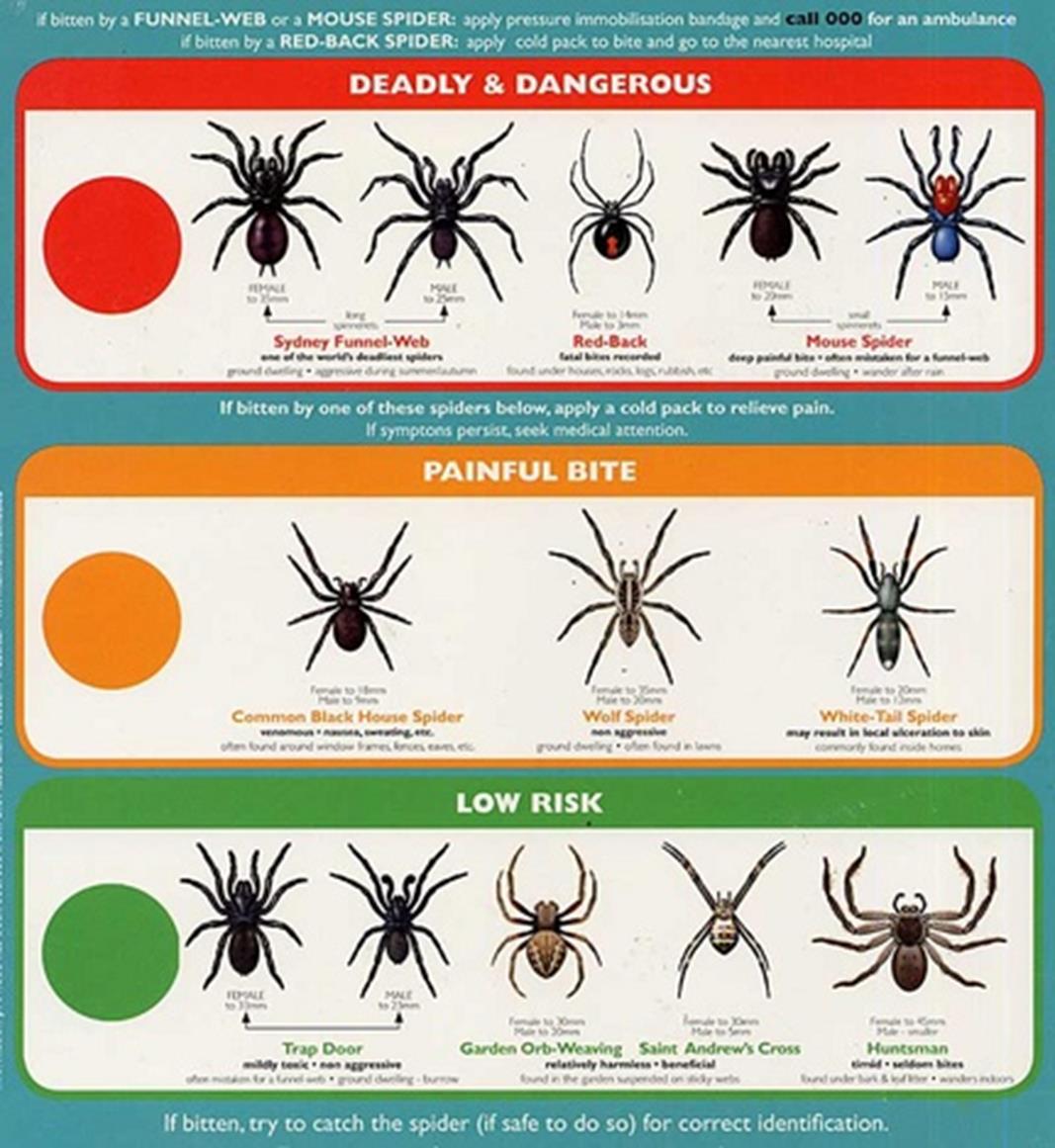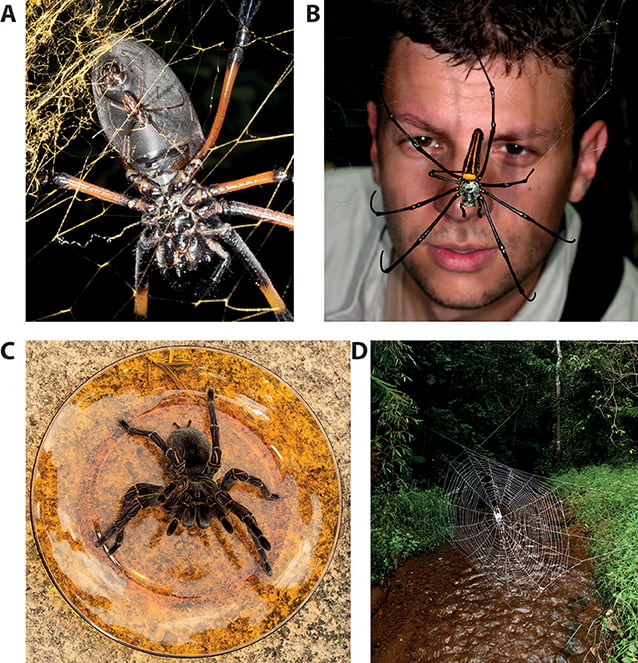There are approximately 45,000 known spider species worldwide. Scientists continue to discover new species regularly.
Spiders, those eight-legged arthropods that often spark fascination and fear, are incredibly diverse. This diversity reflects their ability to adapt to a wide range of environments, from deserts to rainforests. Their presence on every continent except Antarctica highlights their adaptability and the extensive range of habitats they occupy.
Spiders play a crucial role in natural ecosystems, acting as both predators and prey. Their ability to control insect populations makes them indispensable in maintaining ecological balance. Understanding the vast number of spider species is not just about quantifying biodiversity; it’s about appreciating the complex roles these creatures play in our world. As research continues, the number of identified spider species grows, providing deeper insights into their behaviors, biology, and contributions to ecosystems.
The Diversity Of Spider Species
The diversity of spider species is nothing short of remarkable. Our planet teems with these eight-legged arachnids. Each one boasts unique features and abilities. Scientists work tirelessly to catalogue the vast array of species. Yet the exact number remains elusive. Let’s delve into the current understanding of spider diversity.
Estimates And Current Data
Researchers estimate over 45,000 spider species exist. This figure comes from years of study and exploration. The World Spider Catalog updates this data regularly. It is a comprehensive resource for spider classification.
Spiders come in all shapes and sizes. They range from the tiny Samoan moss spider to the giant huntsman. Spiders inhabit diverse environments. These habitats stretch from tropical rainforests to arid deserts.
Here’s a quick overview of spider diversity in numbers:
| Category | Number of Species |
|---|---|
| Documented species | 45,000+ |
| Estimated undiscovered species | Thousands more |
Factors Affecting Species Count
Several factors impact the count of spider species. These include:
- New species discovery through exploration
- Habitat loss leading to extinction
- Taxonomic revisions clarifying species classification
- Advancements in DNA analysis identifying new species
Researchers find new species every year. They explore remote areas and use advanced techniques. However, habitat destruction poses a threat. It leads to the loss of unknown species before discovery.
DNA analysis plays a pivotal role in spider taxonomy. It helps distinguish between species that look similar. Taxonomic revisions sometimes merge species. Other times, they split one species into several.

Credit: simple.wikipedia.org
Taxonomy And Classification Challenges
Understanding the diversity of spider species is a tough task. Scientists work hard to identify and classify these incredible creatures. Yet, challenges in taxonomy and classification remain. The world of spiders is vast and complex. Many species are still undiscovered. This makes spider classification a continuous and evolving process.
Complexities In Spider Taxonomy
Spiders are part of the Arachnida class. This class includes scorpions, ticks, and mites. There are over 45,000 known spider species. But this number changes often. New species are found. Some species are reclassified. This is due to their diverse habitats and behaviors. Morphological similarities add to the confusion. DNA analysis helps, but it’s not always possible.
- Morphological similarities between different species
- Variation in spiders’ habitats and behaviors
- Continuous discovery of new species
- Reliance on DNA analysis for accurate classification
Recent Advancements In Classification
Technology is changing spider taxonomy. New tools and methods are now available. These tools help scientists study spiders better. DNA barcoding is one such tool. It identifies species using genetic material. This method is more accurate than traditional ones. It reduces misidentification. It also helps in discovering new species.
| Advancement | Impact |
|---|---|
| DNA Barcoding | Improves species identification |
| Genetic Databases | Stores data for easy access |
| Imaging Techniques | Provides detailed species visuals |
These advancements streamline the classification process. They bring clarity to the spider taxonomy field. Discoveries continue as technology improves. The number of known spider species will likely grow. This makes the study of spiders an exciting and dynamic field.
Habitats And Ecological Distribution
Spiders live almost everywhere on Earth. From forests to deserts, they adapt to survive in different places. Let’s explore the world of spiders and where they call home.
Global Distribution Patterns
Spiders have conquered the globe. Every continent except Antarctica houses these eight-legged wonders. Their ability to live in various climates makes them successful survivors.
- Tropical rainforests host the most diverse species.
- Deserts and arctic areas have specialized species that thrive there.
- Even urban environments are home to certain adaptable species.
Habitat Specialization
Spiders show amazing adaptations to their habitats. This specialization helps them survive in specific environments.
| Habitat Type | Adaptation Examples |
|---|---|
| Deserts | Water conservation, burrowing |
| Forests | Camouflage, web-building in trees |
| Urban Areas | Building webs on structures, eating household pests |
In each habitat, spiders have evolved unique skills. These skills help them catch food, hide, and live well.

Credit: www.domyown.com
Discovering New Species
The world of spiders is vast and mysterious. Scientists work hard to discover new spider species. Every year, they find creatures never seen before. This process is exciting and important for understanding nature’s diversity.
Expeditions And Research
Scientists go on trips called expeditions to find new spiders. They visit jungles, deserts, and mountains. Every place has different spiders. Teams take pictures, make notes, and collect spiders carefully. These trips help us learn about spiders and their homes.
- Visit remote locations
- Collect samples
- Study habitat conditions
Modern Discovery Techniques
Nowadays, scientists use cool tools to find spiders. They use cameras that can see tiny details. DNA tests tell us if a spider is a new species. Computers help keep track of all the information.
| Tool | Use |
|---|---|
| Microscopes | See small details |
| DNA Testing | Identify new species |
| Databases | Track discoveries |
Using these methods, scientists make new discoveries. They share their findings with the world. This way, we all learn more about spiders and their role in nature.
Threats To Spider Biodiversity
Threats to Spider Biodiversity are numerous and escalating. With over 45,000 known spider species, each plays a crucial role in ecosystems. Yet, these remarkable arachnids face dangers, particularly from human actions and habitat changes. Understanding these threats is vital for spider conservation and the health of our planet.
Impact Of Human Activity
Human activity significantly affects spider populations. Habitat destruction stands out as a major concern. As forests, grasslands, and other natural areas give way to urban sprawl, agriculture, and industry, spiders lose their homes. Pollution also poses a serious threat. Pesticides and industrial waste harm spiders directly and indirectly by contaminating their prey. Climate change, driven by human actions, further alters habitats and disrupts spider life cycles.
- Habitat loss due to urban development
- Pollution from pesticides and waste
- Climate change affecting weather patterns
Conservation Efforts
Protecting spiders is crucial for biodiversity. Conservation efforts focus on habitat preservation and sustainable practices. Protected areas safeguard critical habitats for spiders and other wildlife. Research helps us understand spider needs and how to help them. Education raises awareness about the importance of spiders and the need to protect them. These actions help ensure spiders continue to thrive.
| Conservation Action | Impact on Spiders |
|---|---|
| Habitat Protection | Saves homes for spiders |
| Research | Improves understanding |
| Education | Builds awareness and support |

Credit: www.nationalgeographic.com
Role In Ecosystems
Spiders play a crucial part in maintaining healthy ecosystems. Their presence balances insect populations. This leads to thriving plant life. Spiders also serve as food for other species. Their role is complex and vital.
Predatory Impact
Spiders are nature’s pest control. They consume vast amounts of insects. This prevents overpopulation. Crops and plants remain protected due to spiders. Their appetite for pests supports agriculture and gardens.
- Control insect populations
- Protect crops and plants
- Support biodiversity
Indicator Species
Spiders signal environmental health. A rich variety of spiders suggests a healthy ecosystem. They show changes in biodiversity. This helps scientists monitor the environment.
| Indicator | Environmental Clue |
|---|---|
| Spider Diversity | Healthy Ecosystem |
| Population Changes | Biodiversity Shifts |
Cultural Significance And Misconceptions
The world of spiders is vast and diverse, with species count in the tens of thousands. These arachnids not only boast an impressive array of biological traits but also hold a unique place in human culture. Despite their ecological benefits, spiders battle many misconceptions and cultural myths.
Myths And Fears
Spiders often evoke fear. This fear stems from long-standing myths. Some cultures believe spiders bring luck, while others see them as omens. Common misconceptions paint spiders as aggressive and harmful, yet most species prefer to avoid humans.
- Black widow and brown recluse spiders are notorious, yet bites are rare.
- Spiders are often mistaken for being much larger than they are due to fear.
Spiders In Popular Culture
Spiders have spun their way into popular culture, often symbolizing mystery and power. Comics, movies, and literature frequently feature spiders as central motifs. Characters inspired by spiders often possess strength, agility, and cunning.
| Character | Origin |
|---|---|
| Spider-Man | Comics |
| Charlotte | Literature |
In movies, spiders often symbolize danger but also creativity and resilience. The weaving of webs is a metaphor for life’s interconnectedness.
Future Of Arachnology
The world of arachnology is ever-evolving. New spider species discoveries hinge on the latest scientific strides. Here’s a glimpse into the technologies and public efforts shaping this field’s future.
Technological Advances In Research
High-tech tools are revolutionizing spider studies. DNA sequencing now identifies species accurately. Advanced cameras capture spiders in their habitats. Researchers study these images to learn more. Microscopic techniques unveil tiny details. These details help classify spiders better.
Robotics even enters arachnology. Robots mimic spiders to understand their movement. This knowledge aids species identification and behavior analysis. Databases grow with spider information. Scientists share this data worldwide.
Citizen Science Contributions
Public involvement boosts spider research. People worldwide report spider sightings. They use apps to share photos and locations. Scientists receive more data. This data helps track spider species spread.
- Online platforms connect enthusiasts. They discuss and aid spider identification.
- Community science projects emerge. They focus on local spider populations.
- Everyday observations add to scientific knowledge. This helps discover new species.
These contributions are vital. They support scientists in understanding spider diversity. They also help in conserving rare species. The future of arachnology looks bright with collective effort and innovation.
Frequently Asked Questions
How Many Species Of Spiders Exist?
There are over 45,000 known species of spiders worldwide. Researchers continually discover new species, so this number is always increasing.
Can Spiders Be Found Globally?
Yes, spiders are found on every continent except Antarctica. They thrive in diverse environments, from deserts to rainforests.
What Is The Largest Spider Species?
The Goliath birdeater is the largest spider by mass and size. It can reach up to 11 inches in leg span and is found in South America.
Do All Spiders Spin Webs?
No, not all spiders spin webs. Some actively hunt their prey, like the wolf spider, while others lay in ambush without using a web.
Conclusion
Exploring the vast world of spiders reveals an astonishing diversity. With over 45,000 species documented, the arachnid family continues to surprise researchers. Curiosity fuels the quest to discover even more, hinting at nature’s boundless complexity. Embrace the marvels of spider species and their pivotal role in our ecosystem.
Stay tuned as science unravels the mysteries of these fascinating creatures.
Related posts:

I’m MD Tanvir, and I bring years of expertise gained from working closely with pest control companies to the forefront. My journey in the industry has inspired me to launch Bug Battler, a platform aimed at equipping people with the know-how to combat pests autonomously. Through Bug Battler, I aim to empower individuals with practical insights to tackle pest infestations effectively.

